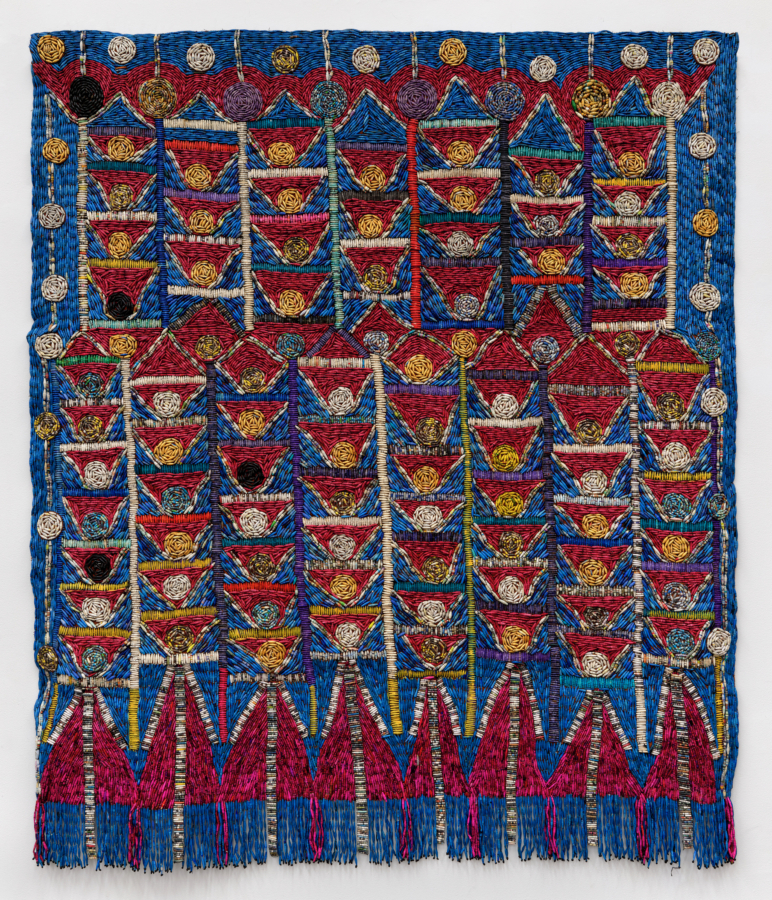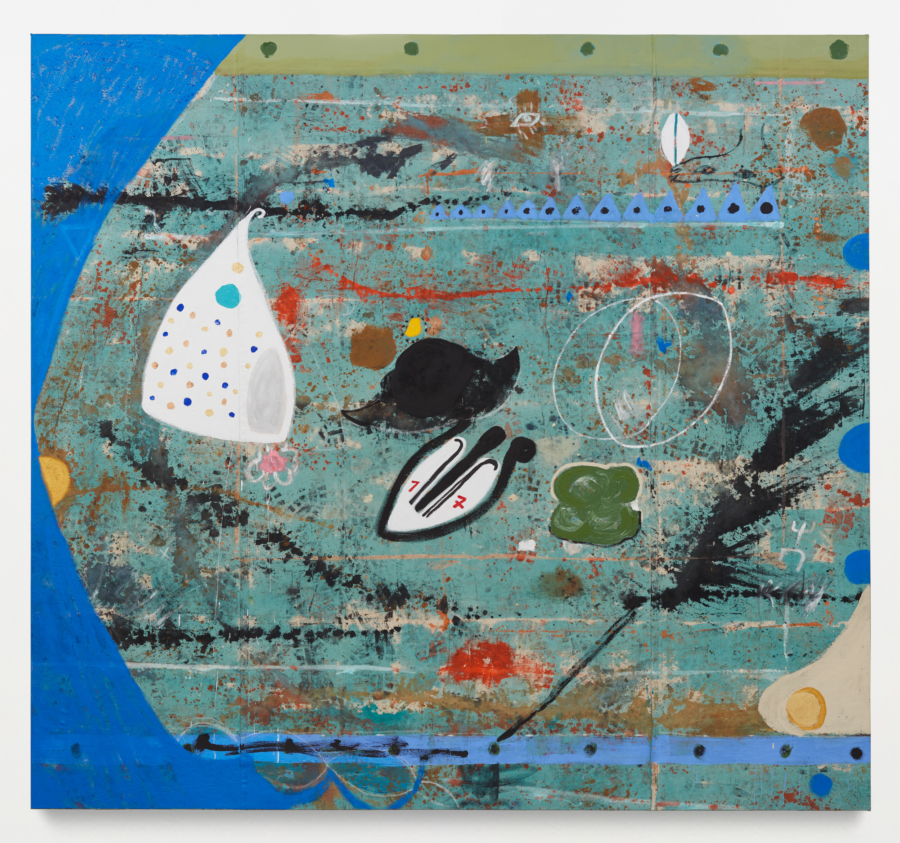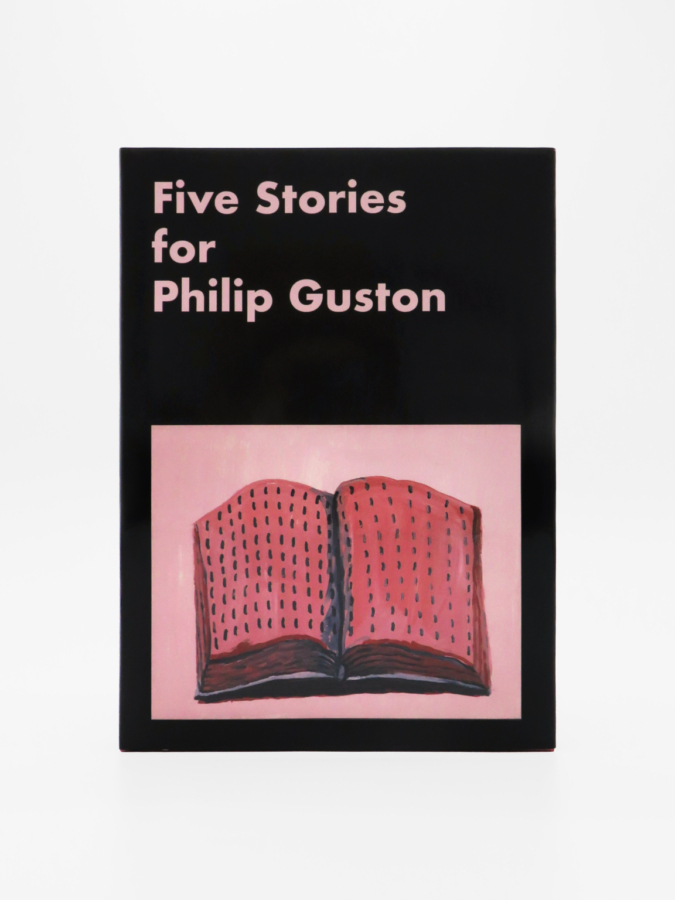Andrew Cranston
Waiting for the Bell
June 24–August 6, 2021
Karma
188 & 172 East 2nd Street
New York, NY, 10009
Andrew Cranston
Waiting for the Bell
June 24–August 6, 2021
Karma
188 & 172 East 2nd Street
New York, NY, 10009
“A painting by Andrew Cranston is a forest of reeds, going in, or a thick storm of rain, or a cloud of steam: we make out big things, and we get the textures first. We are moist or dry or scared or loved. We stay. We look around. We ask for directions, perhaps, from the people we’ve met. They might be walking a dog or setting a table or even painting a painting. If there is a dog, we play with the dog.”
—Stephanie Burt
Karma is pleased to present Waiting for the Bell, an exhibition of recent paintings by Andrew Cranston (b. 1969, Hawick, UK). This is the artist’s first New York solo exhibition.
Cranston creates transportive images that destabilize our sense of time: they invite the viewer to explore a space between nostalgia and the realm of the dream. Dense blots of oil graze on top of washes of distemper, guiding the viewer’s eye through thick and thin layers of pigment. Kindling the wistful poetics of a distant, perhaps imagined, memory, Cranston’s vignettes remove themselves from the constant rhythm of time. The images in Waiting for the Bell conjure a state of liminality—the feeling of being suspended in a dream before the alarm jolts one back to reality.
Dappled brushwork, delicate hues, and cloisonne-like textures dance across the surfaces of Cranton’s still lives, landscapes, and interiors. The imagery draws from stories, poems, images, and experiences that emerge from the artist’s subconscious. Each painting’s layering is guided by intuition: a reference to a Carole King album cover is interlaced alongside allusions to jazz history, the writing of Muriel Spark, and visions of the Scottish coast. Cranston uses both additive and reductive processes in his paintings. He dyes the canvas with pigment, later bleaching over the stain to create negative spaces that evoke figurative forms—what he refers to as “found images.” The resulting compositions are collaborations between chance and intention.
For his small-scale works, Cranston uses hard book covers as surfaces, implicating their history and patina in his pictures. He incorporates the unique features of these found objects. Leafy trees in House of the famous poet and a gilt mirror in Madame deux cent are placed over the debossing on the covers, integrating the medium and texture of the novel as picture plane. Harvest of a quiet eye, its title taken from William Wordsworth’s A Poet’s Epitaph, features a table with a corrugated surface, the oil paint thinned to highlight the cover’s decorative grooves. With an ochre palette resembling a sepia-toned picture, the painting’s lyrical trees, mountains, fruits, and vases stylistically reflect Wordsworth’s romantic musings.
Shifting from a gem-like scale to a monumental size, Cranston’s larger works are painted, more traditionally, on canvas. Landscape with Rangers players sets the Scottish Football Club in a beachfront vista. Recalling the muted coloring and thin washes in William Blake’s paintings, Cranston uses strokes of varying opacity to indicate the swells of waves and the irregular shapes of clouds in motion and the sky in flux. With mauve and coral hues ambiguously presenting either dawn or dusk, the artist draws attention to the passage of time, binding the ephemeral landscape in pattern, space, and sentiment. In the show’s titular piece, Waiting for the Bell, a lone woman dressed in yellow contemplatively sits in a wicker chair against a panoply of deep and pale reds. The variegated background emerges from a dyed and bleached surface; thick strokes of oil paint and faded striations indicate a thicket of near and far trees, their recessive quality echoed through the physicality of Cranston’s additive and subtractive process. The monochromatic setting mutes the scene, letting the musicality of glowing orbs ring through the scene like twinkling bells. Luminous and meditative, the scene captures the reflective constitution of Cranston’s practice; the lone woman wanders in and out of daydreams, the real world put on pause.
The exhibition will be accompanied by a fully-illustrated catalogue published collaboratively by Karma and Ingleby Gallery, UK. The catalogue contains newly commissioned essays by Stephanie Burt and Barry Schwabsky.



